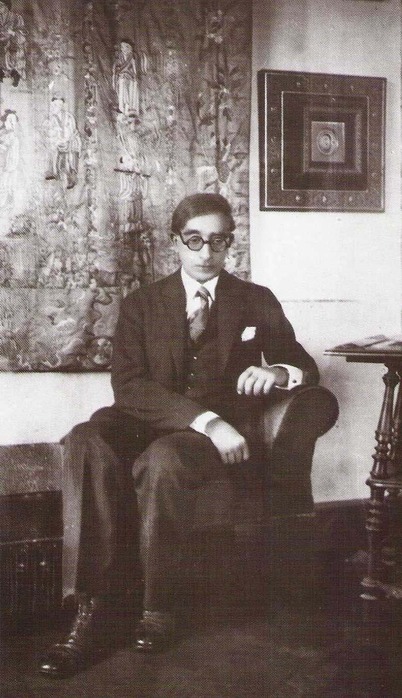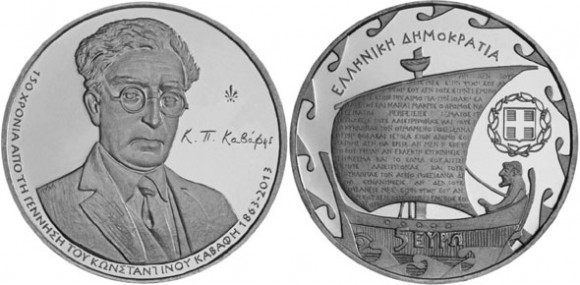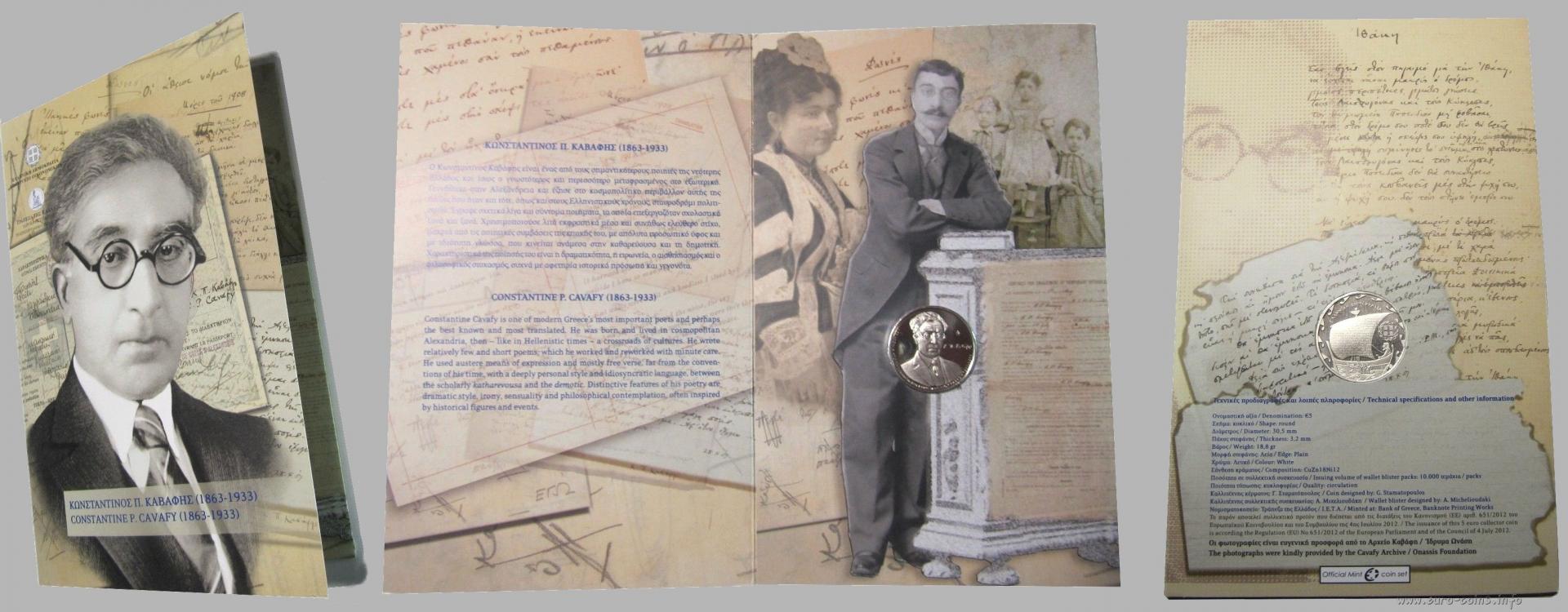
The Bank of Greece has issued a new coin which marks the 150th anniversary of the birth of one of the Greek community's most well-remembered poets, Constantine Petrou Kavafis (1863–1933) who is considered instrumental in the revival and recognition of Greek poetry both at home and abroad. His poems are, typically, concise but intimate evocations of real or literary figures that have played roles in Greek culture. Uncertainty about the future, sensual pleasures, the moral character and psychology of individuals and a fatalistic existential nostalgia are some of the defining themes.
Constantine Petrou Kavafis was born in 1863 in Alexandria, Egypt, to Greek parents, and was baptized into the Greek Orthodox Church. His father was a prosperous importer-exporter who had lived in England in earlier years. Having lived in Constantinople, Liverpool and France, Kavafis returned to Alexandria where he lived for the remainder of his life. In his own self- description, Kavafis wrote »I am from Constantinople by descent, but I was born in Alexandria — at a house on Seriph Street. I left very young, and spent much of my childhood in England. Subsequently I visited Greece as an adult, but for a short period of time. I have also lived in France. During my adolescence I lived over two years in Constantinople. It has been many years since I last visited Greece. My last employment was as a clerk at a government office under the Ministry of Public Works of Egypt. I know English, French, and a little Italian»
Besides his subjects, unconventional for the time, his poems also exhibit a skilled and versatile craftsmanship, which it has been noted, is almost completely lost in translation. Kavafis was known to be a perfectionist, obsessively refining every single line of his poetry. His mature style was a free iambicform, free in the sense that verses rarely rhyme and are usually from 10 to 17 syllables. In his poems, the presence of rhyme usually implies irony.
Constantine Kavafis died of cancer of the larynx on the 29th April 1933, his 70th birthday. Since his death, Kavafis's reputation has grown. He is now considered one of the finest modern Greek poets. His poetry is taught at schools in mainland Greece and Cyprus, and in universities around the world.

The coin, struck at the Greek State Mint and designed by senior Mint artist George Stamatopoulos, — designer of the 2014 COTY award for the most historical coin, and depicts Kavafis in a front-facing portrait positioned slightly towards the left side. The text «150 ΧΡΟΝΙΑ ΑΠΟ ΤΗ ΓΕΝΝΗΣΗ ΤΟΥ ΚΩΝΣΤΑΝΤΙΝΟΥ ΚΑΒΑΦΗ (150th anniversary of the birth of Constantine Kavafis) is placed just under the primary portrait along the rim of the coin. A facsimile of Kavafis' signature is seen just to the right of his portrait and the distinctive mintmark of the Greek State Mint is placed just above the signature.
The reverse design is inspired by Kavafis' homonymous poem «Voyage to Ithaka» which is itself based on Homer's classic «Odyssey». A sail boat is depicted with Odysseus, the poem's hero setting sail — excerpts from the Kavafis' work seen on the sail itself. The denomination of 5 EURO is superimposed on the sailboat and the text «ΕΛΛΙΝΙΚΗ ΔΗΜΟΚΡΑΤΙΑ» (Hellenic Republic) is seen along the upper half and above the sail. The Greek crest is placed just to the right of the sail.

Country: Greece
Data of issue: 2013
Face value: 5 Euro
Metal: Cupro-nickel
Weight: 18,8 g
Diameter: 30,5 mm
Quality: UNC
Mintage: 10,000 pcs
Зарегистрируйтесь или авторизуйтесь, чтобы оставлять комментарии.
Это очень просто и занимает буквально несколько секунд!
Авторизоваться
Зарегистрироваться